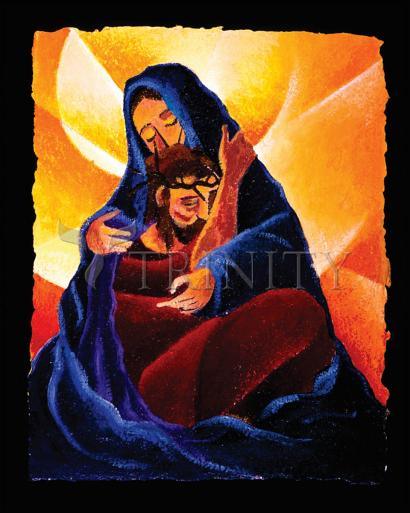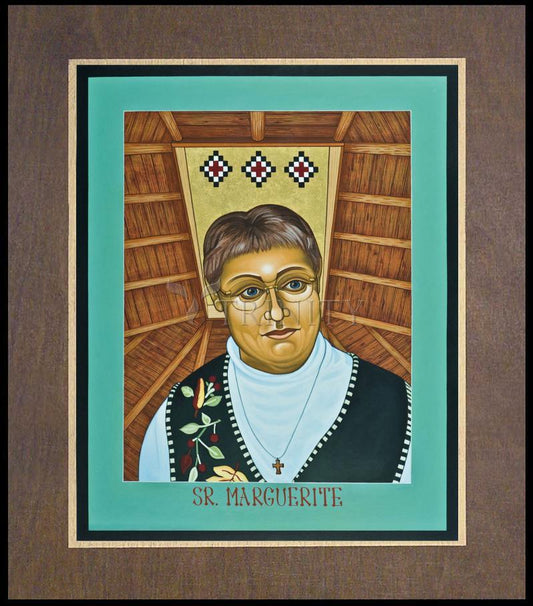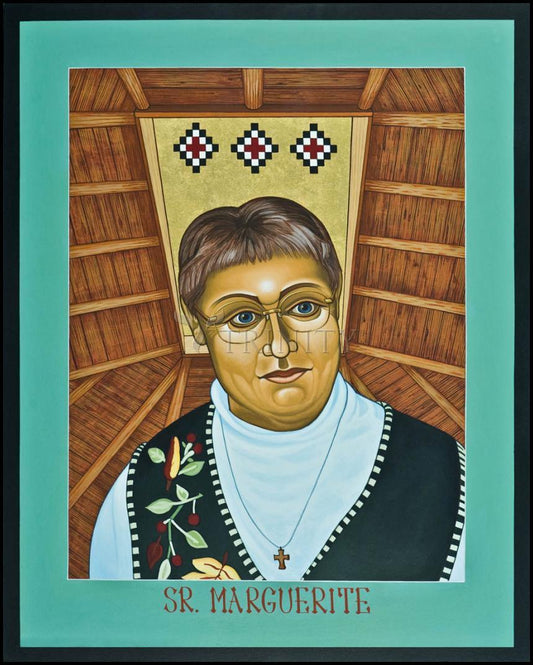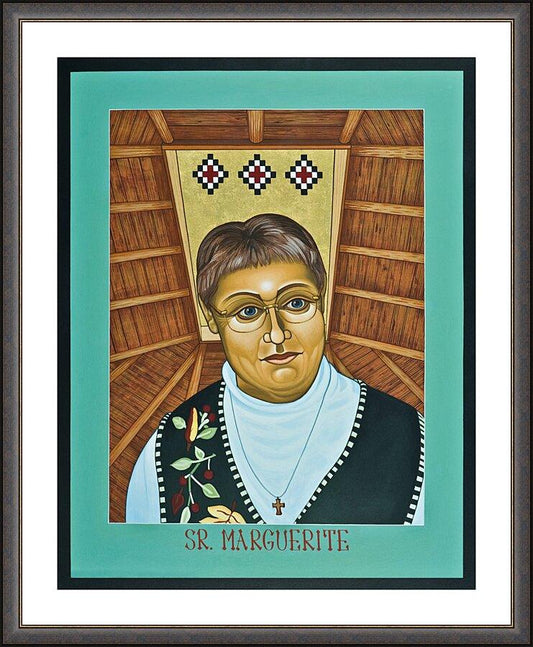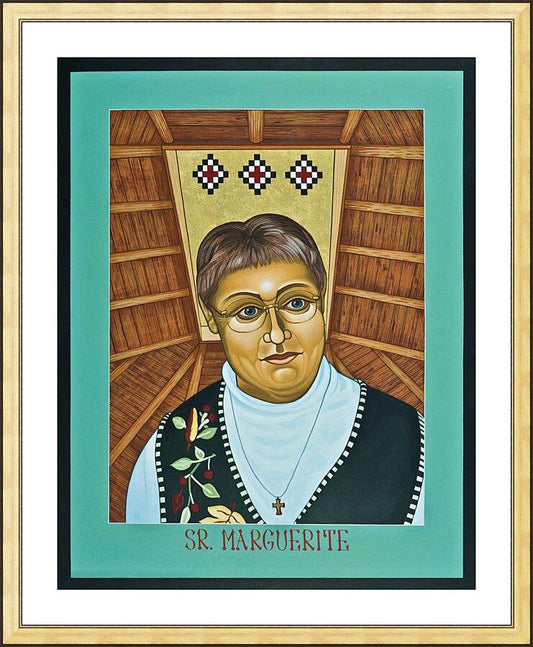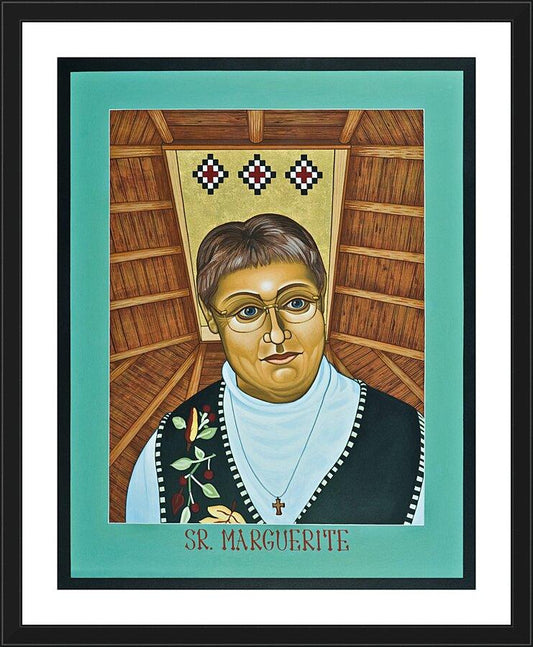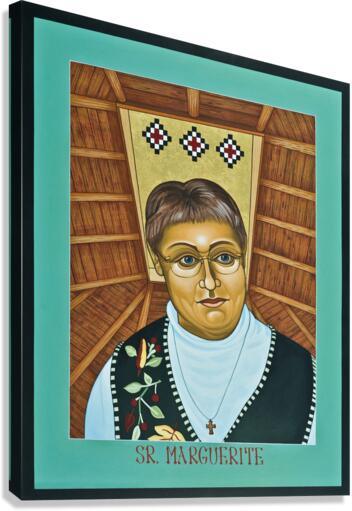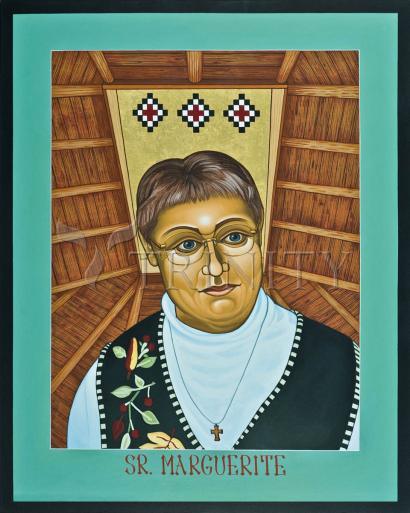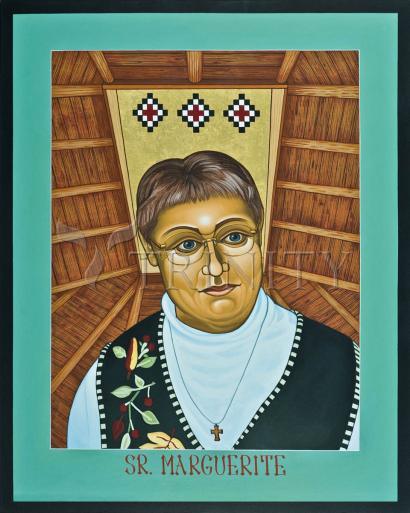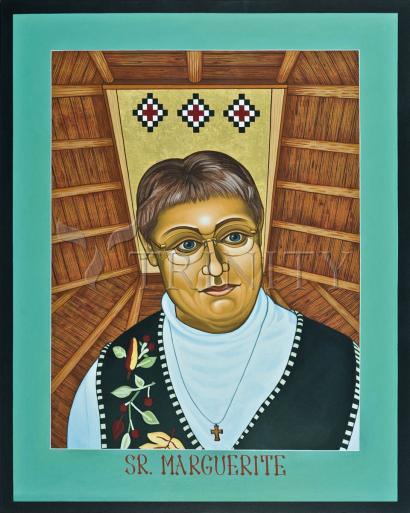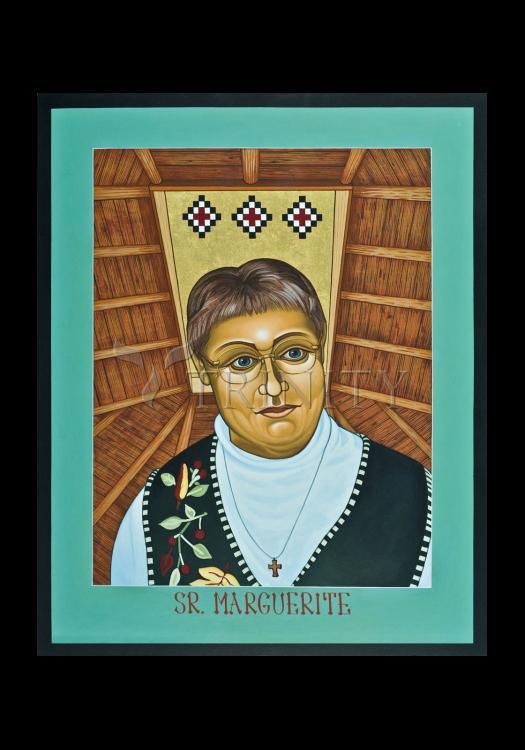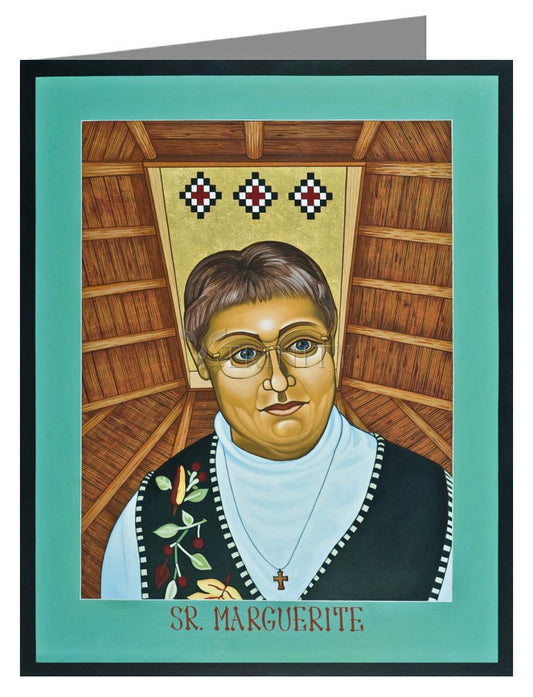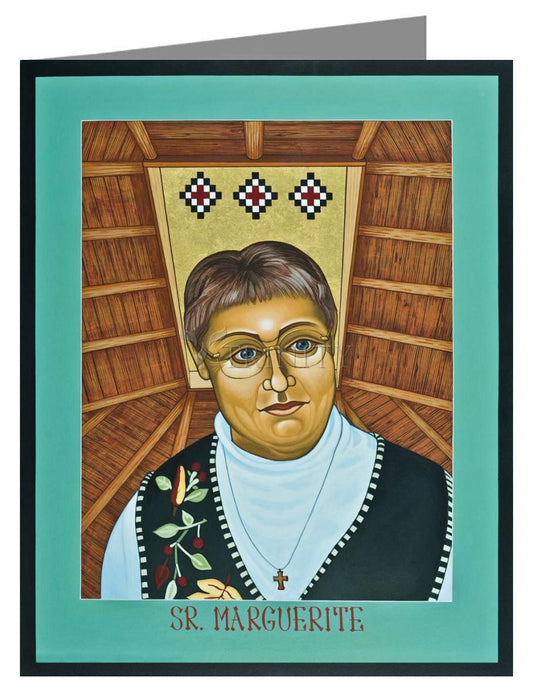ARTIST: Lewis Williams, OFS
ARTWORK NARRATIVE:
Sisters of the Blessed Sacrament (SBS) Sister Marguerite’s home was the small Dine’ community of Navajo, NM. Sculpted red sandstone and eroded volcanic outcrops intermingle in this high desert, windswept land. Marguerite followed her orders founder St. Katherine Drexel’s call to this land 10 years ago, serving the local Navajo from St. Berard’s mission, supported by the Franciscans of St. Michael, AZ. Her beloved call was to educate local children and adults in faith. Many challenges faced her and the people, ranging from poverty, poor nutrition, diabetes, alcohol and substance abuse, suicide and more. Yet she was fed by finding Christ in this new family, walking with them as best she could in ‘Hozhoni’, the Beauty Way. On the eve of All Saints day, she went to bed. Very early the next morning, she heard an intruder. The 18 year old burglar, apparently surprised by her presence, reacted and brutally murdered her. Not at church the next morning, one of her sister friends went to check on her, and found her body.
Viewing herself as a wounded healer, flawed but following her call, she was joyful when at times she sensed herself being used as God’s tool. In service to others, she saw herself in reflection of the Eucharist; as bread taken, blessed, broken and given. In life and in death, it is abundantly evident to those who knew her.
In this image, as a sign of her holiness, I sought a unique aura of light (a halo). She walked in two worlds, so images that blended these kept coming to me in prayer. Eventually, the idea of a Navajo home, a traditional hogan came to me. The SBS sisters have a hogan at their Desert House of Prayer, and this was often used by Marguerite. The opening in the roof of the hogan became the light that encompasses her head. She wears a favorite vest. The symbols above her head are from a Navajo woven rug, the symbol to me emphasizing fours and threes; the four sacred directions, mountains, seasons, etc… of the Dine’, and the three crosses within the three diamonds indicative of how she lived as a Catholic within the world of the people she loved so much. The idea of the Holy Trinity was powerful to her. The border color is turquoise.
b. July 31, 1945 - d. November 1, 2009.
Read More
Sisters of the Blessed Sacrament
Originally called the Sisters of the Blessed Sacrament for Indians and Colored People, the religious order was founded in 1891, by St. Katharine Drexel. Today, the order is commonly known as the Sisters of the Blessed Sacrament.
The Third Plenary Council of Baltimore (1884), which at the time was the meeting of all Roman Catholic bishops in the United States, renewed the vigor with which there was to be missionary work among the "Colored and Indian races". The Right Reverend James O'Connor, Bishop of Omaha, acting alongside Katherine Drexel, daughter of Francis A. Drexel of Philadelphia, decided with the approval of the Most Reverend P. J. Ryan, Archbishop of Philadelphia, to form a new congregation on behalf of the two groups.
History:
The first sisters, including foundress Katharine Drexel, entered religious life under the tutelage of the Sisters of Mercy in Pittsburg, PA. They were also inspired by the Right Rev. James O'Connor, who served as Spiritual Director to Katharine Drexel till his death. After completing a two year novitiate to learn the foundations of religious life and upon first profession of vows, these sisters were clothed in the habit of the new congregation of the Sisters of the Blessed Sacrament of the Indians and Colored People. Mother Katharine Drexel (now St. Katharine Drexel) was installed as superior.
Mission:
There is a twofold purpose of the order: the devout honor and service of Our Lord in the Eucharist and the elevation of the Divinity of Jesus Christ to the Indian and Black races through apostolate of prayer and work.
